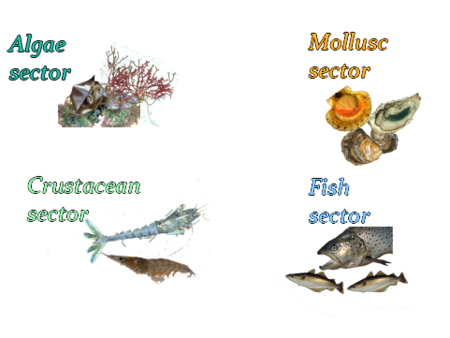Different types of aquaculture
Almost 400 species are reared in the aquatic environment with the aim of harvesting animal or plant protein.
Depending on the species, and geographic and socio-economic data, different modes of rearing can be identified in terms of density and food input. These correspond to the terms used for terrestrial agricultural production.
· Extensive : low rearing density and little or no food input
· Semi-intensive : medium density and additional food
· Intensive : high density and total food input
Certain species are first grown in intensive conditions (hatchery) then, after a period in semi-intensive conditions (nursery on-growing), the animals are grown to full size in extensive conditions. This is the case, for example, with the scallop Pecten maximus in France.
In general, extensive aquaculture is subsistence aquaculture (consumed near where it is grown) and intensive aquaculture produce is for export.
The species reared are principally molluscs (shellfish farming), crustaceans (including shrimp farming), aquatic plants (including algaculture) and fish (fish farming). Each of these groups is described in detail in the following sections:Aquatic plants

